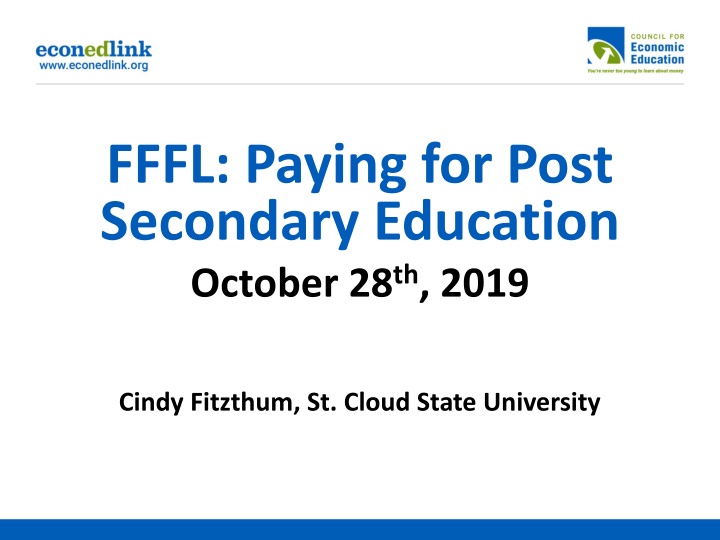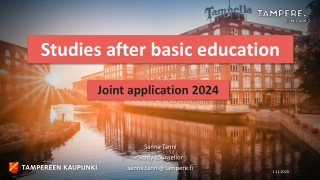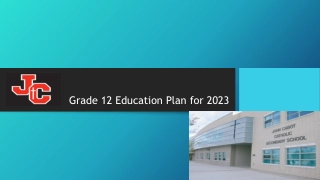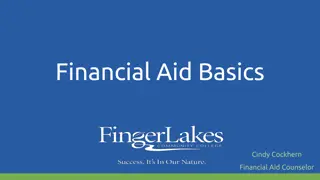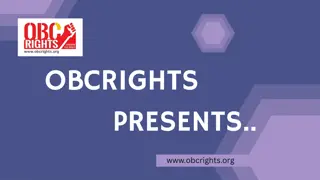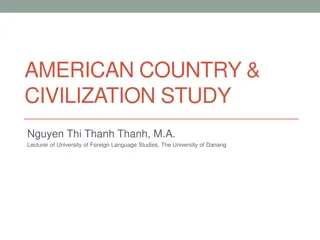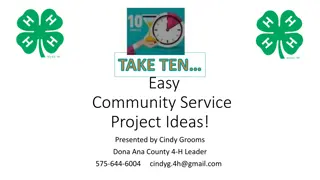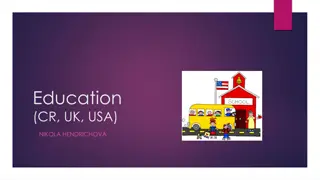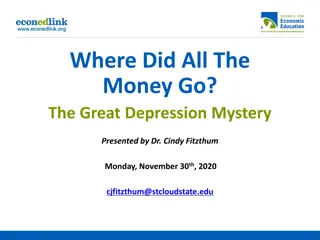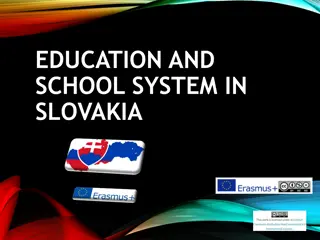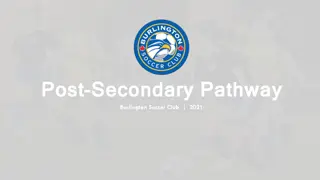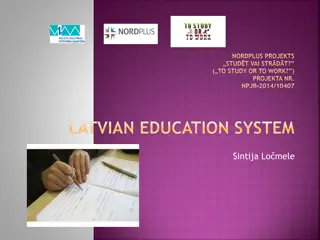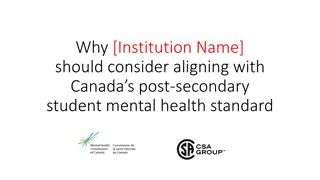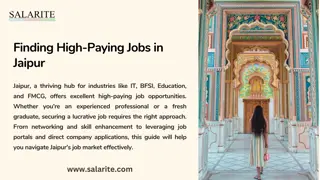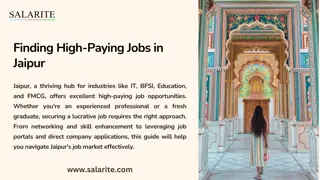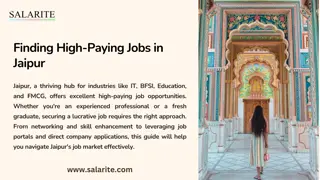Paying for Post Secondary Education - Cindy Fitzthum
Cindy Fitzthum from St. Cloud State University discusses paying for post-secondary education, professional development benefits, and resources available for high school students. Topics include financial literacy, goals, and approaches to teaching about paying for college.
Download Presentation

Please find below an Image/Link to download the presentation.
The content on the website is provided AS IS for your information and personal use only. It may not be sold, licensed, or shared on other websites without obtaining consent from the author.If you encounter any issues during the download, it is possible that the publisher has removed the file from their server.
You are allowed to download the files provided on this website for personal or commercial use, subject to the condition that they are used lawfully. All files are the property of their respective owners.
The content on the website is provided AS IS for your information and personal use only. It may not be sold, licensed, or shared on other websites without obtaining consent from the author.
E N D
Presentation Transcript
FFFL: Paying for Post Secondary Education October 28th, 2019 Cindy Fitzthum, St. Cloud State University
EconEdLink Membership You can now access CEE s professional development webinars directly on EconEdLink.org! To receive these new professional development benefits, become an EconEdLink member. As a member, you will now be able to: Automatically receive a professional development certificate via e-mail within 24 hours after viewing any webinar for a minimum of 45 minutes Register for upcoming webinars with a simple one-click process Easily download presentations, lesson plan materials, and activities for each webinar Search and view all webinars at your convenience Save webinars to your EconEdLink dashboard for easy access to the event You may access our new Professional Development page here
Professional Development Certificate To earn your professional development certificate for this webinar, you must: Watch a minimum of 45-minutes and you will automatically receive a professional development certificate via e-mail within 24 hours. Accessing resources: You can now easily download presentations, lesson plan materials, and activities for each webinar from EconEdLink.org/professional- development/
Cindy Fitzthum, Director of Social Studies Teaching Program at St. Cloud State University Former high school teacher 5-12 Social Studies License, K-12 Principal License Economics Education and Higher Education Administration focus with graduate work Proud mom of three daughters (6,3,1), 2 dogs and one loving husband (Ryan)
1. Goals of webinar 2. FFFL Quick Overview 3. Reflect: What is your relationship with money? 4. Lesson Content 5. Ed Tech Tools: Quizlet 6. Closing and Further Research
What is your #1 goal for this webinar? How do you learn best? Your students?
How can we approach the subject of paying for post secondary education with our high school students? What resources are available to use in your classroom?
Financial Fitness for Life 9-12, 3rd Edition econedlink.org/resources/collection/fffl-9-12/ Updated lessons with slides and 1 1 new lesson 17 17 ready-to-use EdTech Tools 6 6 new activities with Intuit Partnership
How did YOU pay for post secondary education? What are the most common ways your students are financing higher education? Any innovative ideas?
What is your relationship with money? How will this impact how you approach the topic with your students?
~ Olivia Mellon, Author and Psychologist
Hoarder You enjoy holding on to your money. It may be difficult for you to spend money on luxury items or immediate pleasures. Spender You probably love to use your money to buy whatever will bring you pleasure. You have a hard time saving and budgeting. Money Monk You may try to avoid having too much money. You would feel guilty if a large amount of money came your way unexpectedly. Avoider You tend to avoid performing various tasks of everyday money management. You may feel anxious about dealing with money. Amasser You re likely to be obsessed with keeping large amounts of money at your disposal to spend, save and invest. This preoccupation may have having a negative effect on your ability to enjoy life.
financially fit student look like to you? See? Say? Do? What tools do we need to reinforce as educators?
Students will be able to: Describe and identify the costs and benefits of post-secondary education payment options. Identify and analyze return on investment of post- secondary education through cost/benefit analysis.
Budgeting Cost-benefit analysis
An itemized estimate of expected income and expense for a period in the future
Summing the benefits of an action and then subtracting the costs associated with taking that action
Now the fun begins! (or continues )
Feedback: Students need to look at different options to finance postsecondary education. Community College? University? Apprenticeship? Focus on analyzing the costs and benefits of postsecondary education.
Human Capital: Human Capital: skills, effort and education you gain by learning new things This can be informal or formal and in the classroom or outside of the classroom! In which ways can you invest in yourself after high school?
Why do people choose to invest in themselves? How do you plan to invest in your postsecondary education? Think about it: How will your students respond?
Exercise 1: Exercise 1: Costs and Benefits of Postsecondary Education Payment Options What are the benefits of scholarships? What is the cost of using loans to pay for postsecondary education? Besides the cost of postsecondary education, what is a non-monetary factor to consider when borrowing from friends and family members?
Connect to students: What might be the best option or options for you and why? However Exercise 16.2: Return on Investment Scenarios
Monthly Loan Payment: $2,171 Anticipated Gross Monthly Income: $3,111 Employment Outlook*: OOH Should this student choose this option? Why or why not? His monthly loan payment would consume more than 40% of his monthly income. He should look at less expensive options, apply for scholarships and/or consider going to a community college for first two years.
What are some costs of investing in your human capital at the postsecondary level? What are some benefits of investing in your human capital at the postsecondary level? How can you determine if you are making a good return on your investment?
How can you check for understanding and assess this lesson? Exercise 16.3: Is it Worth It? Feedback: We need APPLIED assessments
Students will exit with an idea of what their future salary will be, their employment outlook and student loan repayment amount. Challenge: Have students explain three specific actions they could take to reduce the amount of student loans required to finish their college education or training.
Ed Tech Tools (Quizlet) https://quizlet.com/396696351/costs-and-benefits- of-postsecondary-education-flash-cards/ How can you use this in your classroom to enhance understanding?
https://www.econedlink.org/resources/coll ection/fffl-9-12/
4 Key Takeaways From FFFL: 9-12 1: Tech Tools 2: Revised and Updated Content 3: Additional Lesson 4: Partnership with Intuit
As reported by the Federal Reserve Bank, student loans hit the $1.521 trillion mark in 2018 (Federal Reserve Bank, 2018). The typical college student in 1972 paid $526 a year (in today s dollars) for tuition and fees at an in-state public university (Burd, 2013). In 2016-2017, the typical college student paid $9,650 a year in tuition and fees at an in-state public university (College Data, 2017).
To illustrate this further, in 1987, the average price of a four-year undergraduate degree (tuition, room, board and fees) was $39,643 (Berman & Zehngebot, 2017). Fast forward to 2017, and the number (adjusting for inflation) jumps to $103,616, which is a 161% increase in a 30-year period (Berman & Zehngebot, 2017). Given the current tuition and fee rate annual increases, it is forecasted that in 2037 the average cost for a four-year degree in the United States will be $240,825 (Berman & Zehngebot, 2017).
Figure 1. College Costs. CNN Money. (2017). How the average family pays for college.
The federal government gathers data about students who borrow money to finance their education. In 2018, the total amount of debt for college-loan borrowers was $1.521 trillion (Federal Reserve Bank, 2018). It represents a record 8.5 million Americans who are in default on their student loans (Taibbi, 2017).
CEE Affiliates https://www.councilforeconed.org/resources/local-affiliates/
Contact Information: Cindy Fitzthum, St. Cloud State University cjfitzthum@stcloudstate.edu
